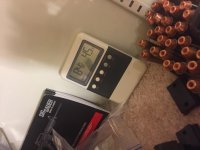Went to a trade show a few weeks ago and saw the Extech 445815, sorry but I could not get the link to work.
Being able to place the remote sensor inside the safe made alot of sense to me so I got one and I like it-about $50 usd on Amazon.
Being able to place the remote sensor inside the safe made alot of sense to me so I got one and I like it-about $50 usd on Amazon.
Last edited:



